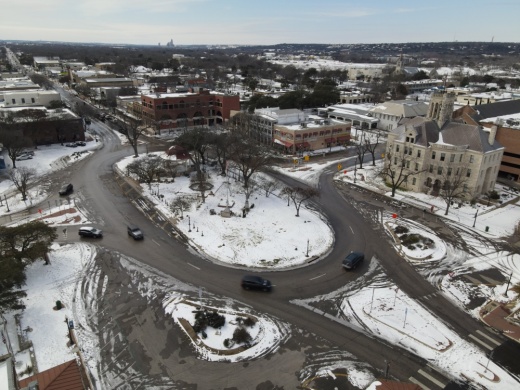After energy production and processing failed to keep pace with demand during the week of Feb. 15, the Electric Reliability Council of Texas called for rolling outages in an attempt to shed load and allocate resources, NBU Power Supply Manager Rebekah Crouch said during a Jan. 20 conference.
Though the storm was not the coldest on record, Crouch said a recent report from ERCOT called it the most extreme storm the state has experienced.
“When you take temperature, moisture, duration of the storm and geographic area, all those things put together, it was the most extreme storm we had,” she said. “The four big takeaways from the storm were that there was an extreme weather event; all generation resources were impacted; natural gas specifically had a lot of issues during the storm because of processing failures and production declines; and then communications [suffered].”
After the cost of power skyrocketed from around $30 per megawatt to $9,000 per megawatt during the storm, NBU incurred about $93.7 million in energy costs for February 2021. The company’s budget for the entire fiscal year had previously been set at $88.5 million.
“What we did in NBU was we took on short-term debt, and it was a taxable note to cover those costs,” NBU CEO Ian Taylor said. He estimates the short-term debt issued for the winter storm should be paid off sometime this spring.
Following the passage of Senate Bill 3 during the most recent Texas legislative session, generation resources and facilities were required to begin the winter weatherization process, and utility providers were required to submit to electric providers and the Public Utility Council of Texas a list of water facilities that were identified as critical.
Utility providers are also required to submit an emergency preparedness plan to the Texas Commission on Environmental Quality by March 1 that outlines how they would overcome an extended power outage for more than 24 hours while keeping the system’s water pressure of 20 pounds per square inch or greater, NBU Water Services Director Michael Short said.
As part of winter weather preparations, Short and his team have installed thermal coverings at exposed valves, purchased small generators to reduce potential communications failures, stockpiled winterization materials and identified 14 locations that are in need of additional generation.
Long lead times on equipment that is necessary for completing the plan have made Short doubtful the NBU will be able to fully implement the plan by the July 1 deadline, and NBU is working with the TCEQ to find alternatives for the timeline, he said.
Gregory Thomas, chief engineer of electric services for NBU, said though the company did not experience any outages before or after ERCOT directed NBU to shed load, the system suffered significant damage, and three substation breakers had to be replaced following the storm.
“Whenever you open and then close in a substation breaker, that's like taking a sledgehammer to your system. You are forcibly disconnecting customers and forcibly reconnecting them,” Thomas said. “That inrush can be to the point that that overloads equipment that would not have been overloaded otherwise, and that's exactly what occurred.”
NBU Electric Services has completed its annual review and is creating annexes and updates to its emergency operation plan based on tabletop exercises conducted with NBU and local officials.
In December, the department submitted a report to the PUC after complying with winter weather preparations required for transmission facilities.
The company has also established minimum inventory levels for critical equipment and updated its communication plan to communicate with customers through energy emergency alerts.





